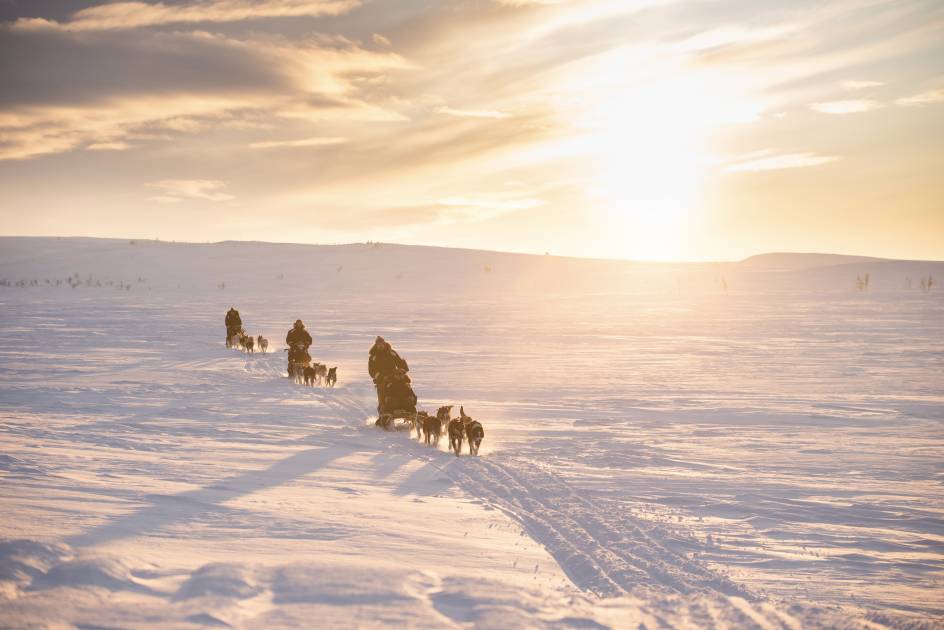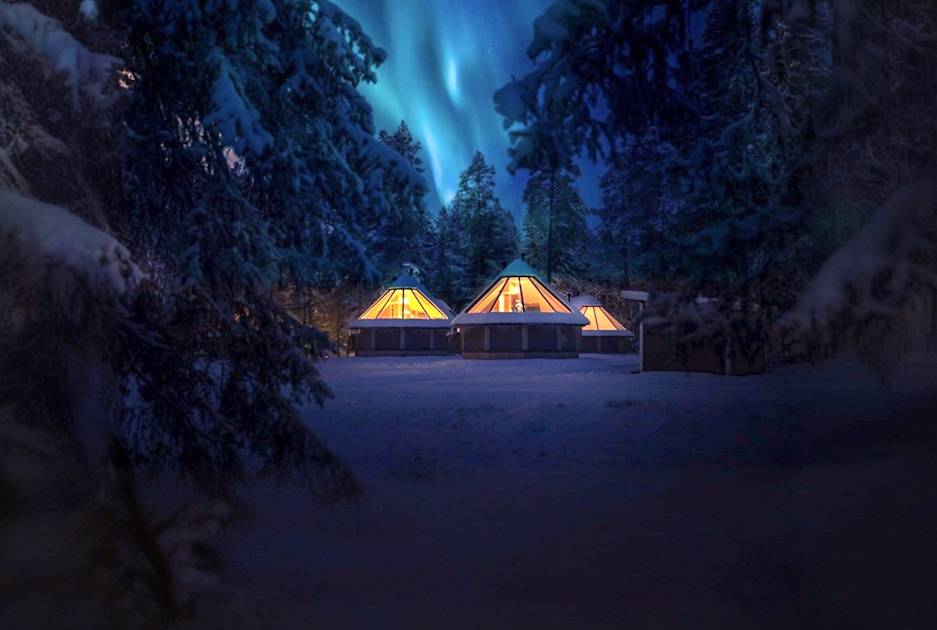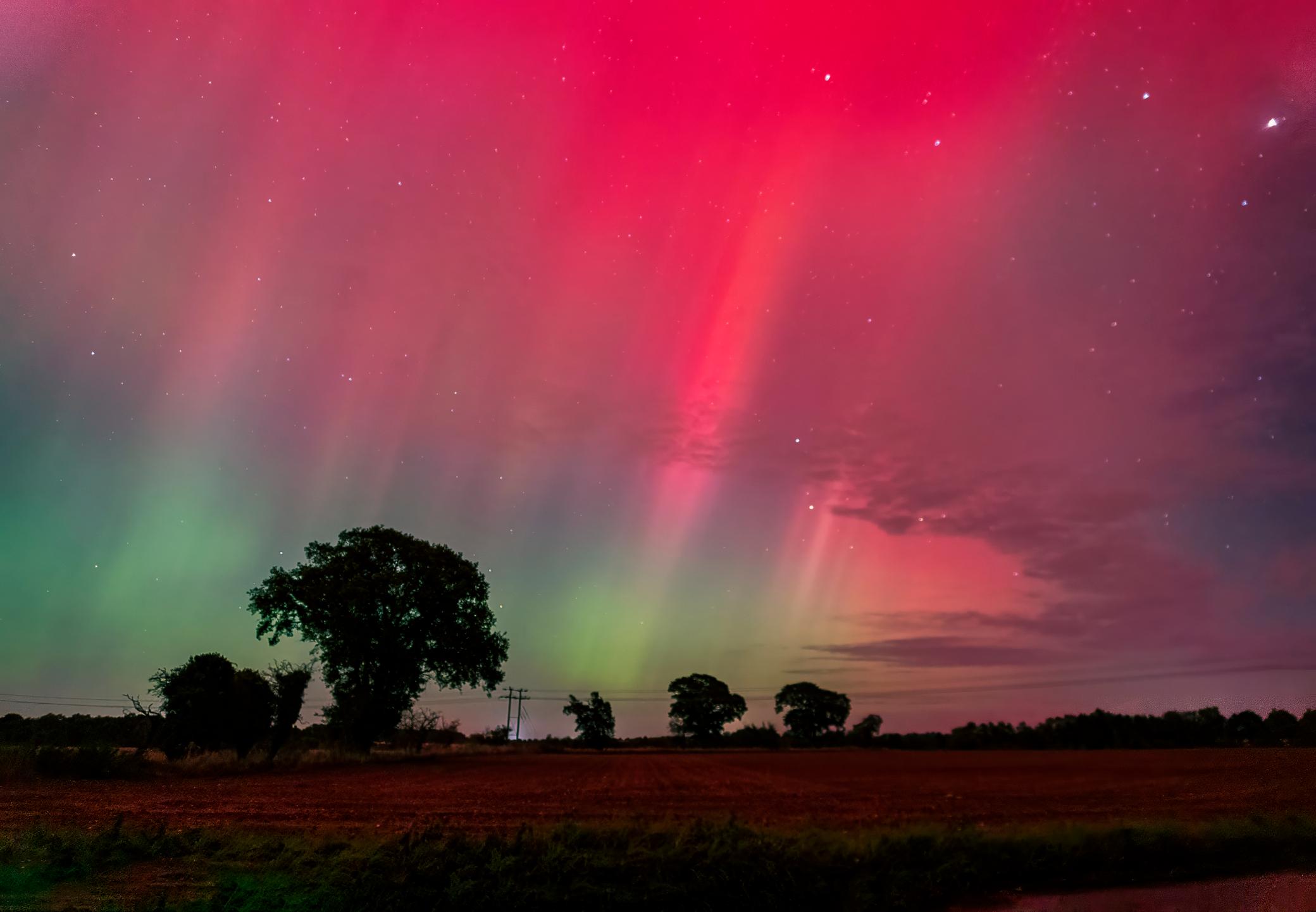
In October 2024, people across England – as far south as London, Kent and East Anglia – were treated to a brilliant display of the northern lights. Those far from light pollution saw flickering green and scarlet lights emblazoned across the sky. Even those in towns and cities saw the sky smudged with eerie hues.

This celestial spectacle felt miraculous. The northern lights are most commonly associated with the Arctic Circle, with sub-zero temperatures and polar bears. Not with a quiet housing estate in East Anglia (which is where we caught sight of them).
So, why were the northern lights visible so far south? And, most importantly – will it happen again in 2025?
How Often Can You See the Northern Lights in England?

The northern lights tend to be visible at latitudes of between 60 and 75 degrees. They appear as an auroral oval, circling the North Magnetic Pole. The northern lights are strongest in the places directly under the aurora oval; Greenland, Iceland, Norway, Sweden, Finland, northern Canada, Alaska and parts of Russia. In Scotland’s Shetland Islands, located at 60 degrees north, there's also the chance of glimpsing the northern lights.
But England sits at a latitude of between 50 and 55 degrees north, far below this auroral oval. So why did we see the northern lights in England on several occasions in 2024?

The reason for this is because 2024 and 2025 are a ‘solar maximum’, the highest peak of activity during the solar cycle – and the northern lights are caused by solar activity. Particularly active areas, known as sunspots, eject streams of electrically charged particles of solar wind. The particles stream towards earth and are captured at the north and south poles, where the earth’s magnetic field is at its weakest. The particles interact with gases in the earth’s atmosphere, which results in the beautiful light displays of the aurora.
During a solar maximum there are an increased number of sunspots, resulting in more charged particles entering the atmosphere. Our current solar maximum, that of solar cycle 25, has so far exceeded the activity of the previous few cycles. This has made the aurora display more frequent and intense. Solar wind also disturbs the earth’s magnetic field, changing the location of the auroral oval and resulting in the lights being seen further south.
How Can I See the Northern Lights in England in 2025?

To see the northern lights anywhere in the world, you need the right conditions. A period of high solar activity is one prerequisite. You also need clear skies, which can be challenging in the cloudy northern hemisphere. Finally, you need to make sure you’re somewhere away from light pollution. The northern lights are most visible when it's completely dark – during the summer months, the nights are too short to see them.
If you want to see the northern lights in England, you’ll need to ensure these conditions are met – plus, that there is a particularly high period of solar activity. Make sure you’re aware of this heightened activity by keeping an eye on the auroral forecast, which is usually measured in ‘Kp’.

The Kp-Index (from the German “Planetarische Kennziffer, meaning Planetary Index) indicates the level of geomagnetic activity in the earth’s atmosphere, using a scale between 0-9. A ‘9’ means there’s been an intense geomagnetic storm, which occurs only a few times during each 11 year solar cycle, whereas a ‘3’ refers to some unsettled geomagnetic activity. In lower latitudes like England, you’ll need the Kp to be above 5 to have any chance of seeing the northern lights.
There are several places where you can check the auroral forecast, such as Aurora Watch UK, set up by Lancaster University’s physics department. Your best bet, however, is to sign up to an app which gives you automated alerts of high auroral activity. We like My Aurora Forecast, which alerted us to the presence of the northern lights in October 2024.
So, will you see the northern lights in England in 2025? It's definitely possible, considering the heightened solar activity – especially if you live in the north of England. But to maximise your chances, we recommend going on a northern lights adventure further north; to Arctic Finland or Norway’s Lofoten Islands.
Inspired? Check out our Northern Lights Adventures across Europe.




